-
CATEGORY ::
- All Seeds /
- All Flower Seeds
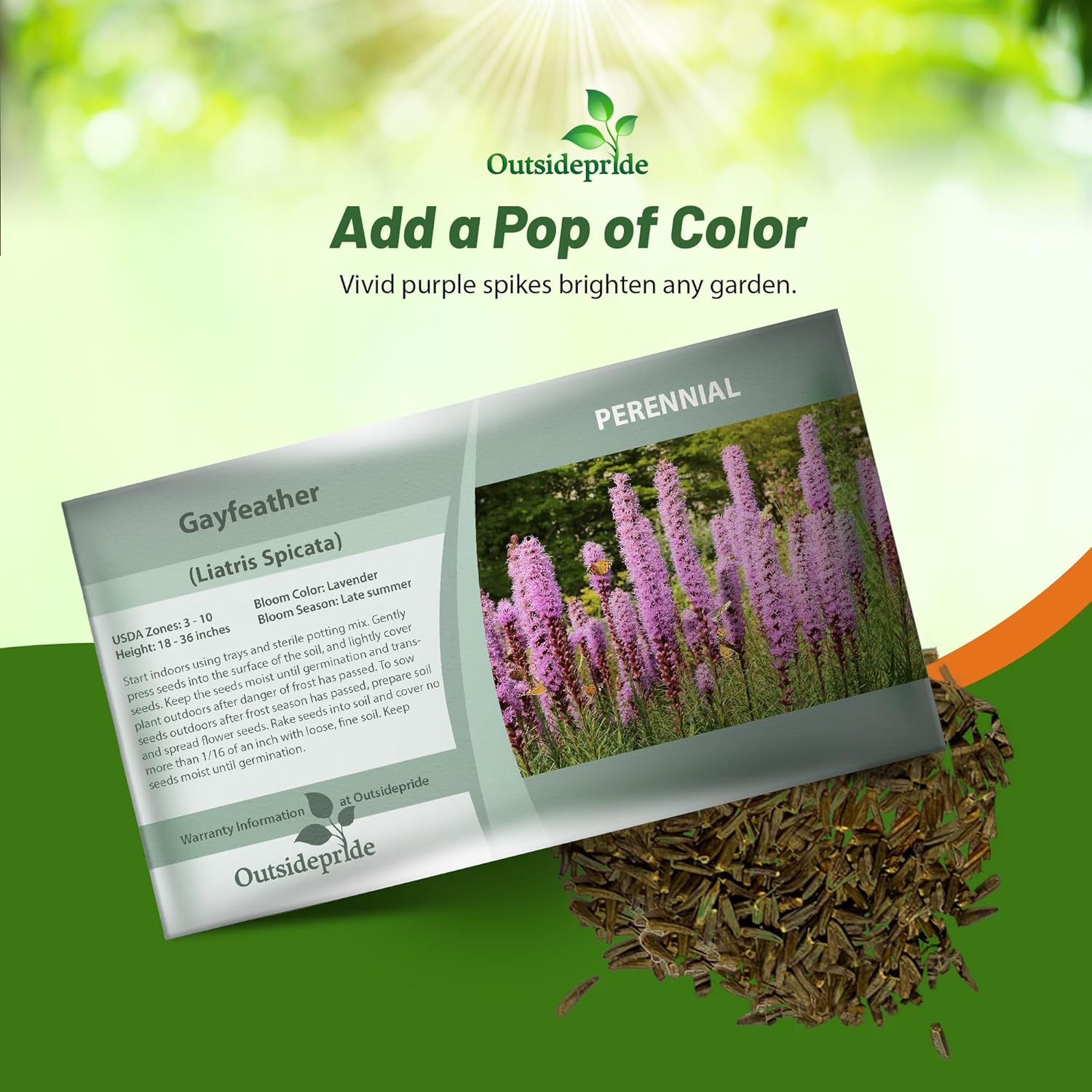

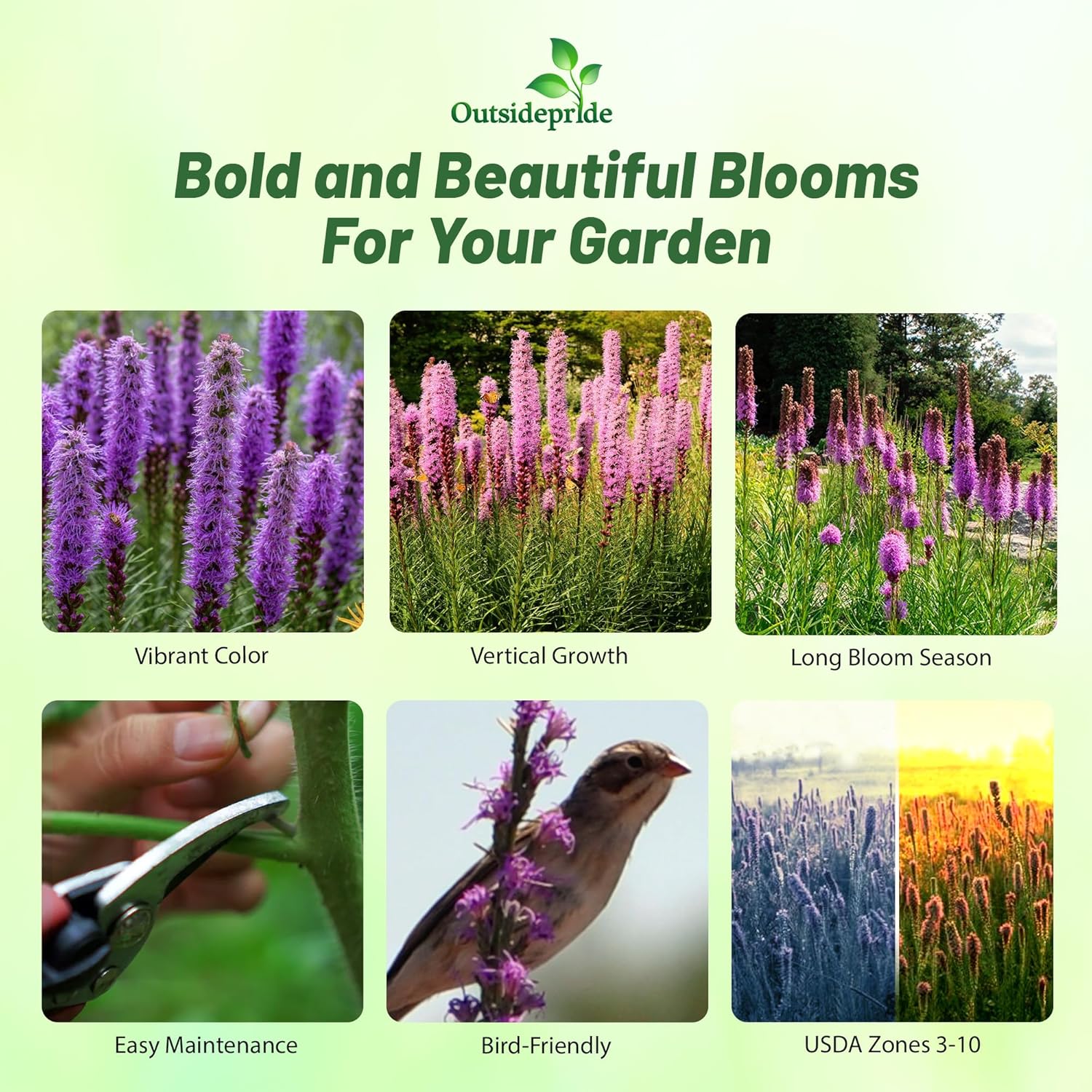
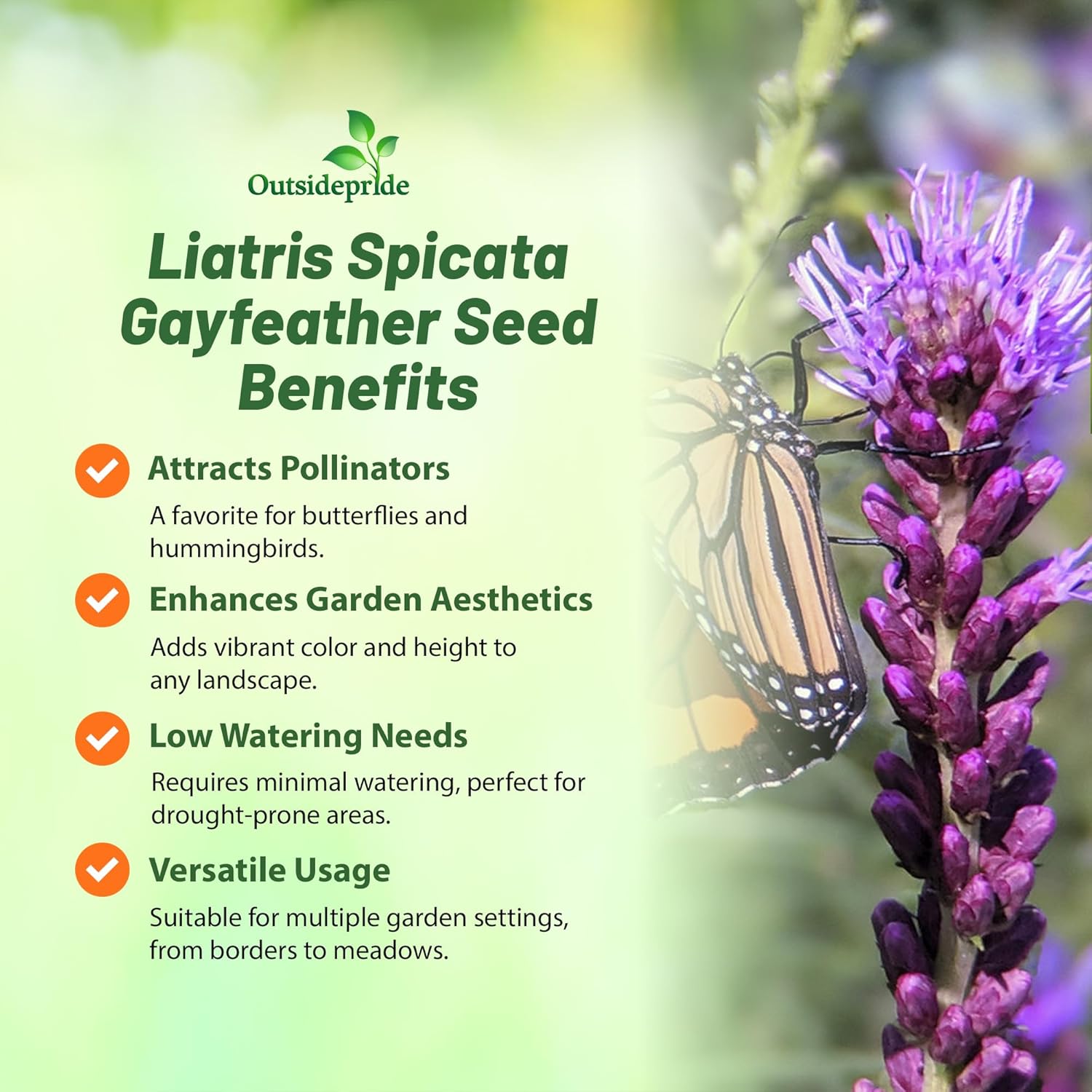
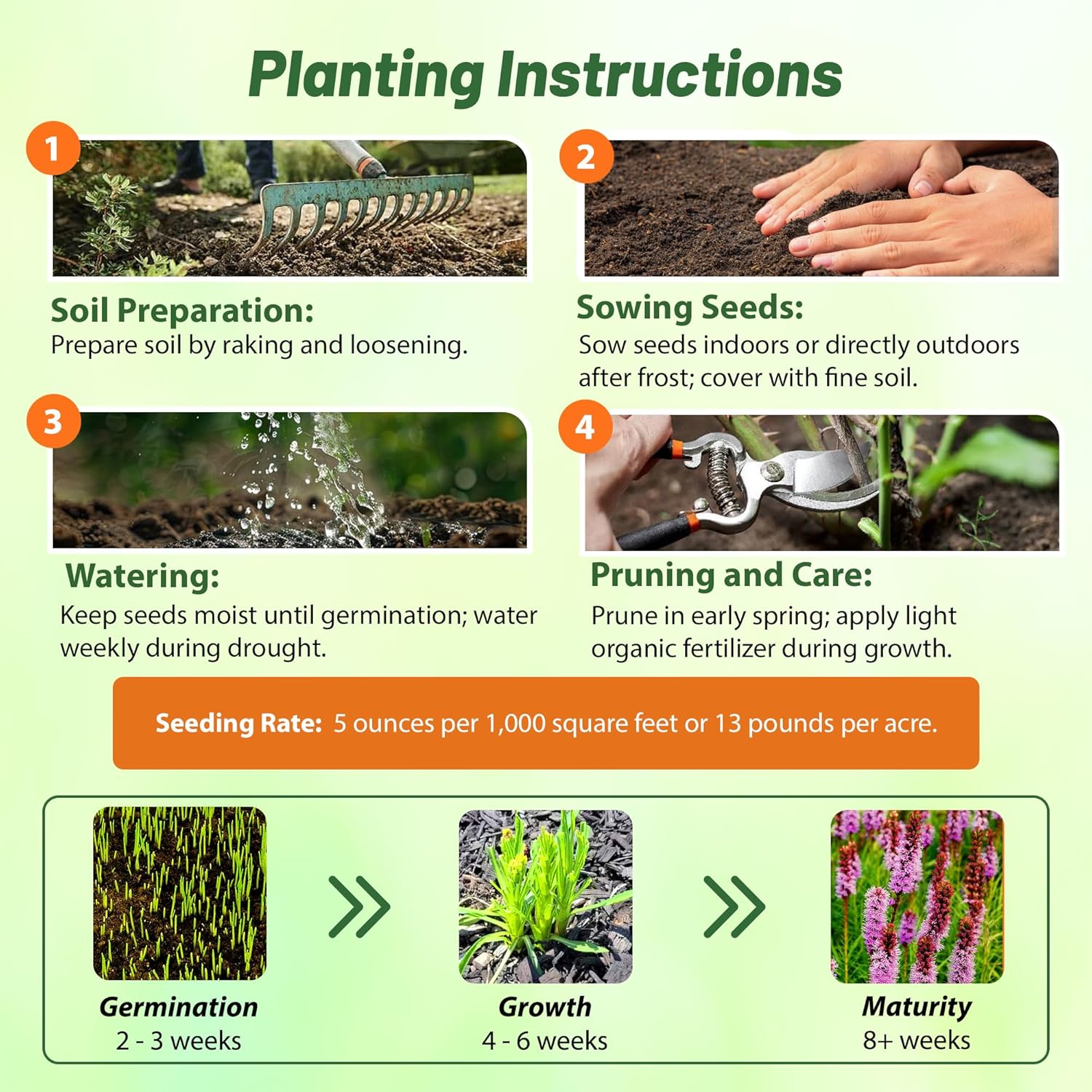







Gayfeather Seeds
About...
Gayfeather (Liatris Spicata) - Grows easily and reliably from Gayfeather seeds, Liatris or commonly called Gayfeather, has dense violet-lavender to rosy purple flower heads, which provide striking vertical form in the perennial wild flower garden and is resistant to drought.MORE FLOWER OPTIONS
Planting Directions
TEMPERATURE
68F
AVERAGE GERM TIME
14 - 21 days
LIGHT REQUIRED
Yes
DEPTH
1/16 inch
SOWING RATE
5 ounces per 1,000 square feet or 13 pounds per acre or 3 seeds per plant
MOISTURE
Keep seeds moist until germination
PLANT SPACING
20 inches

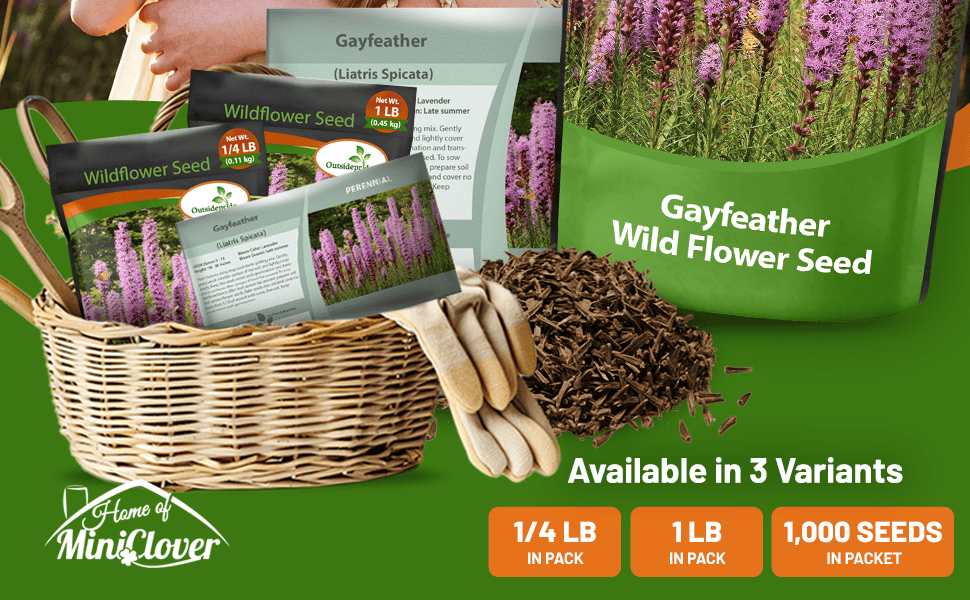
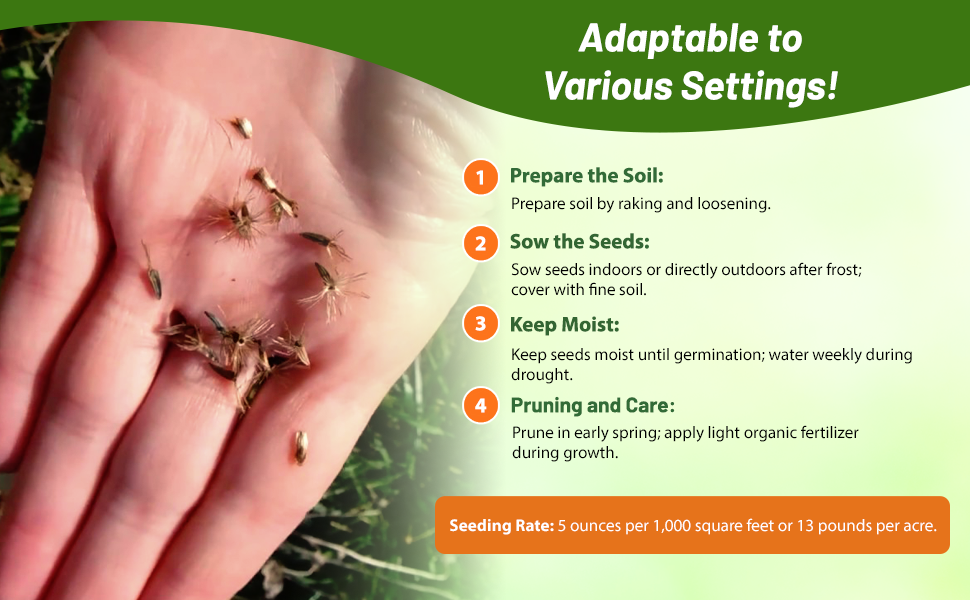
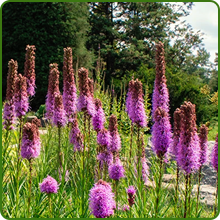
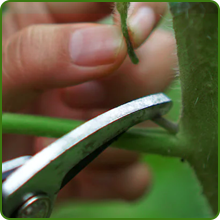
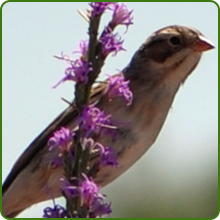
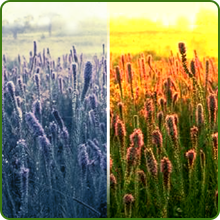
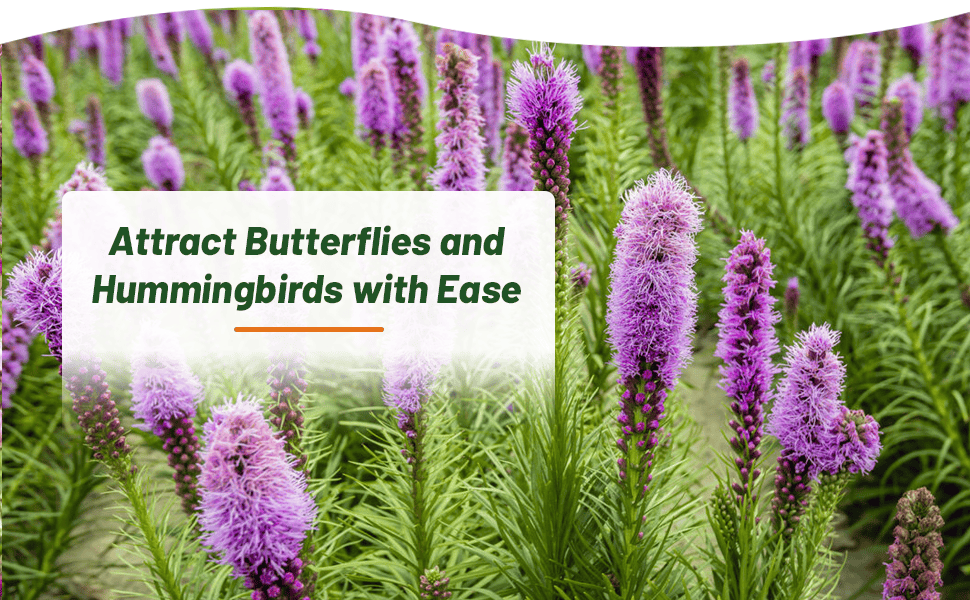
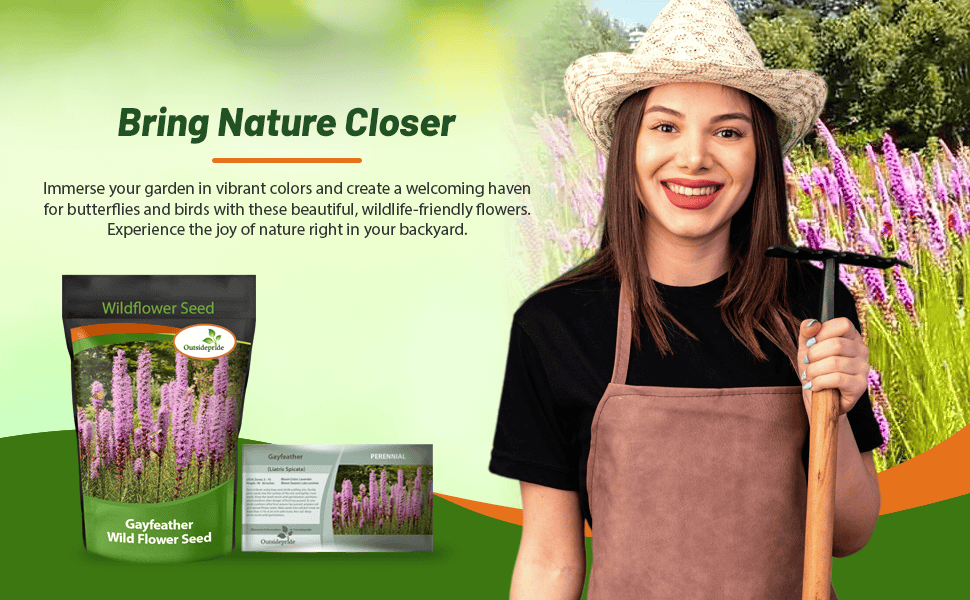
Gayfeather (Liatris Spicata) - Grows easily and reliably from Gayfeather seeds, Liatris or commonly called Gayfeather, has dense violet-lavender to rosy purple flower heads, which provide striking vertical form in the perennial wild flower garden. They perform well in average well-drained soils and full sun, yet they also tolerates poor soils and drought. Unbranched stalks bear dense spikes of lavender to purple flowers in July and August on strong stems. The nectar-rich flowers are a favorite with butterflies and hummingbirds. Songbirds love the wildflower seed.
Planting Directions
TEMPERATURE
70 - 75F
AVERAGE GERM TIME
21 - 28 days
LIGHT REQUIRED
Yes
DEPTH
Do not cover the seed but press into the soil
SOWING RATE
4 seeds per plant
MOISTURE
Keep seed moist until germination
PLANT SPACING
10 inches
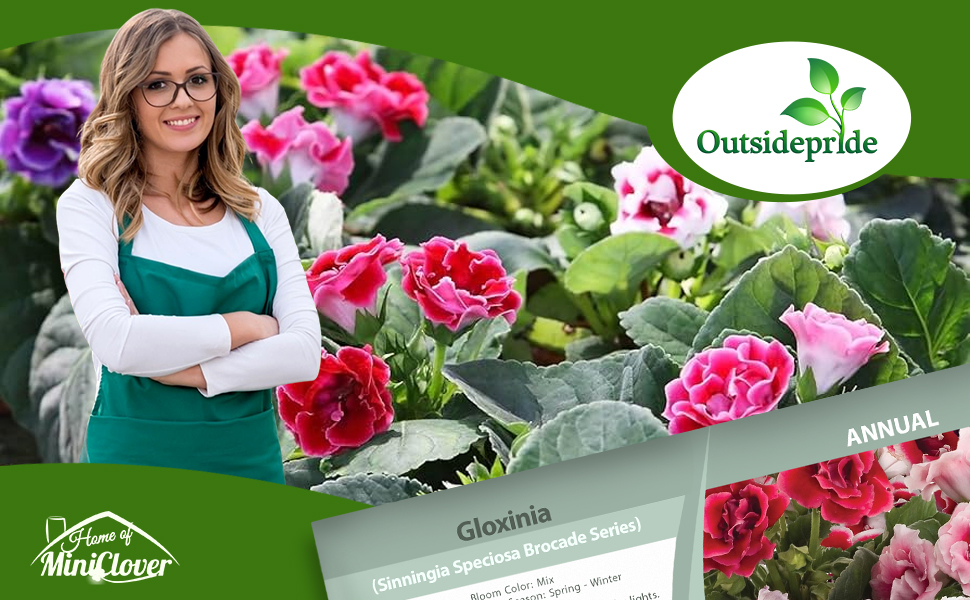
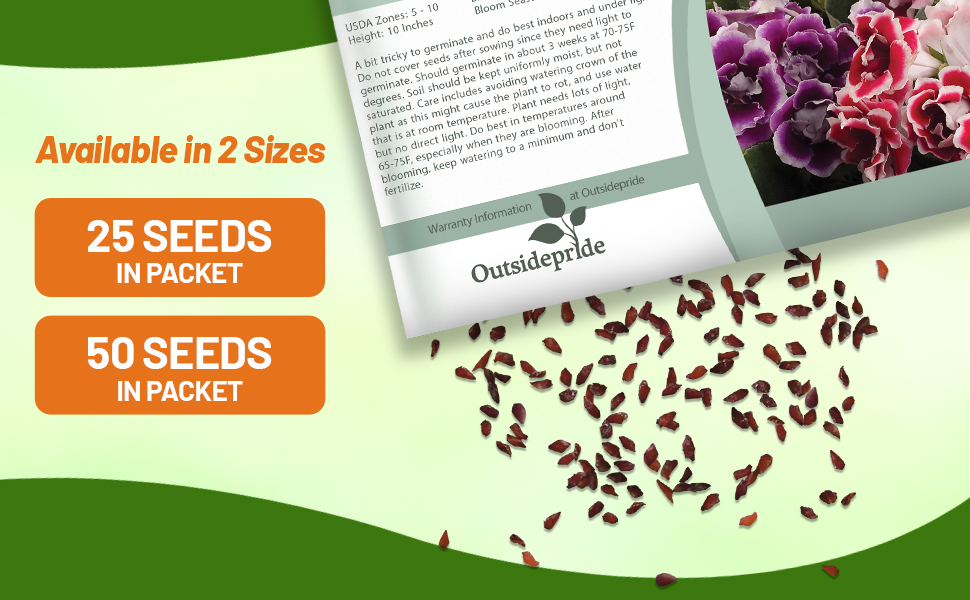
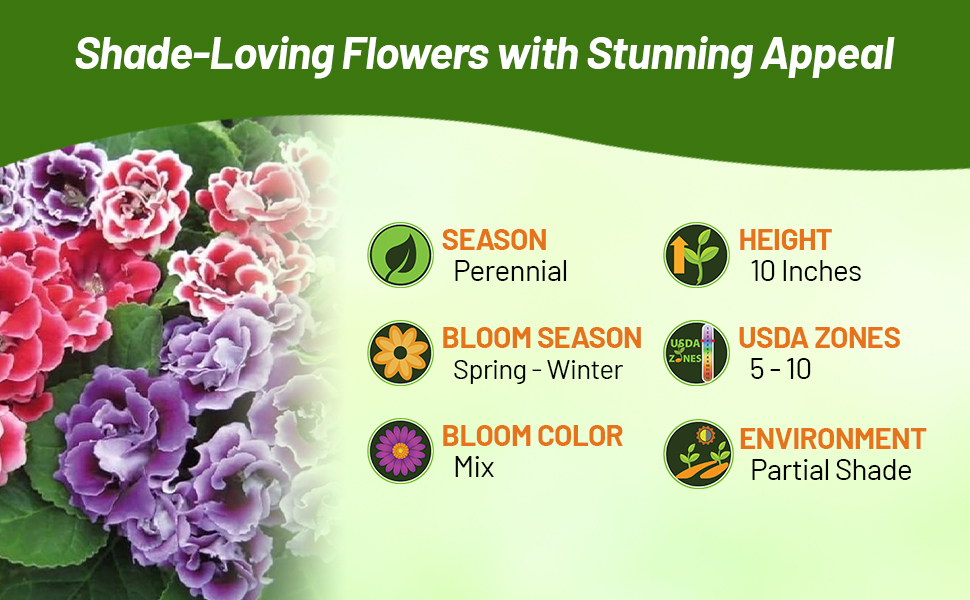
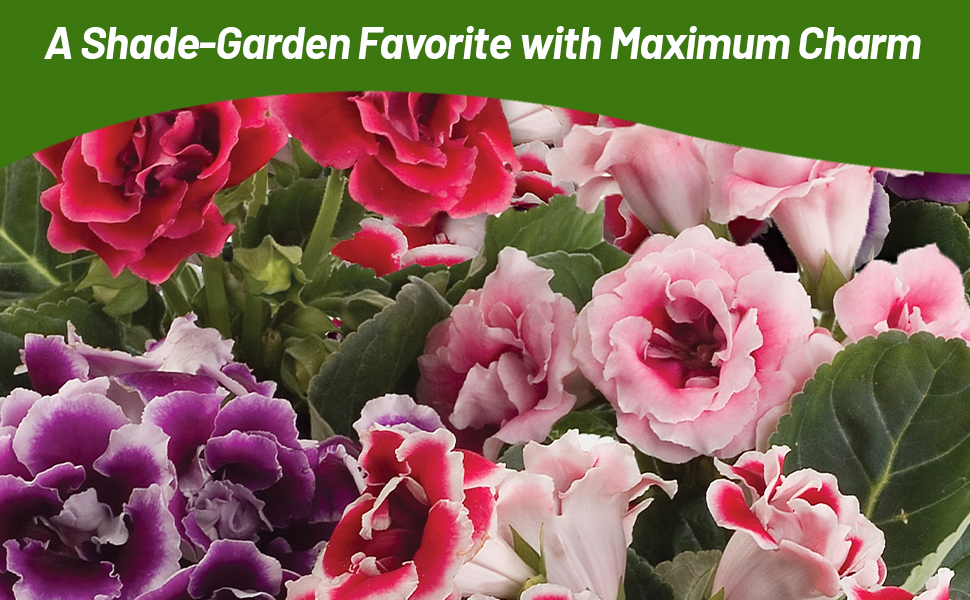
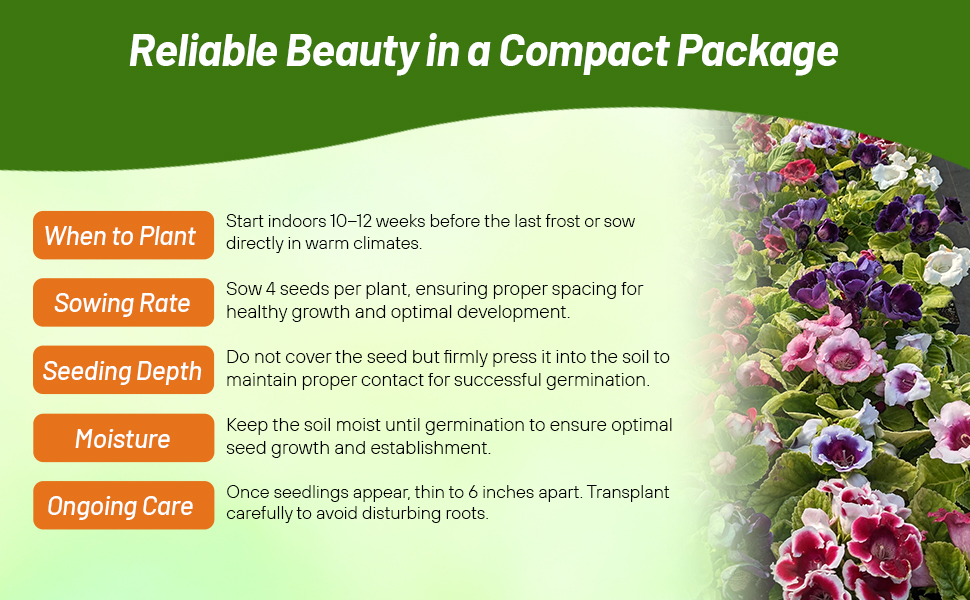
Gloxinia (Sinningia Speciosa Brocade Series) - Sow Gloxinia seeds to produce a beautiful mixture of red, blue, and white blooms. These compact Gloxinia plants blossom four to six months after sowing. They will flower for about 2 months, go dormant for about 2 months, and then begin growing again and start flowering. Gloxinias make a great house plant, giving wonderful, colorful blooms! Sinningia Speciosa is often referred to as Florist's Gloxinia or Brazilian Gloxinia.
Gloxina seeds are a bit tricky to germinate and do best indoors and under lights. Do not cover the flower seeds after sowing since they need light to germinate. Sinningia Speciosa seeds should germinate in about 3 weeks at 70 - 75F degrees. Soil should be kept uniformly moist, but do not keep it saturated. Florist's Gloxinia care includes avoiding watering the crown of the plant as this might cause the plant to rot, and use water that is at room temperature for watering. The Brazilian Gloxinia plant needs lots of light, but no direct light. Gloxinias do best in temperatures around 65 - 75F degrees, especially when they are blooming. After blooming, keep watering to a minimum and don't fertilize.
Common Questions
Do I need to prune my gloxinia?
To encourage a longer bloom season, you will need to deadhead your spent flowers. After the bloom period is over and your plant enters dormancy, prune back any dead or dying foliage.
My leaves are dropping, what do I do?
This can occur from sudden temperature changes such as drafts.
My leaves look scorched, why?
Direct sunlight can burn the leaves of your gloxinia, causing them to scorch and crisp.
My flowers are losing their vibrancy, what do I do?
This is typically caused by inadequate light move your plant to an area with more light but not direct sunlight.
Planting Directions
TEMPERATURE
68F - if no germination in 3 - 4 wks, move to 24 - 39F for 2 - 4 weeks
AVERAGE GERM TIME
21 - 28 days
LIGHT REQUIRED
Yes
DEPTH
Surface sow, do not cover
SOWING RATE
7 - 8 seeds per plant
MOISTURE
Keep seeds moist until germination
PLANT SPACING
36 - 72 inches
Purple Loosestrife (Lythrum Salicaria Rosy Gem) - This attractive perennial produces a showy display of carmine-colored flower spikes throughout much of the summer. It was introduced to the United States and Canada as an ornamental for wetlands in the 1800s. The Purple Loosestrife flower inhabits reed swamps, margins of lakes and slow-flowing rivers, ditches and marshes. It is an aggressive flower and has spread westward and can be found in all states except for Florida. Please check with your state to make sure Purple Loosestrife is ok to plant in your state. There are many states that prohibit planting Purple Loosestrife. It is still promoted by some horticulturists for its beauty as a landscape plant, and by beekeepers for its nectar-producing capability.
Purple Loosestrife seeds can easily be started outdoors in a prepared seedbed in the early spring. Purple Loosestrife care includes deadheading to keep the spread of flower seeds under control.
Currently Can Not Sell To: Arkansas, Colorado, Massachusetts, Illinois, Minnesota, North Dakota, South Dakota, Wisconsin, Kansas, Missouri, Iowa, Idaho, Pennsylvania, and Nebraska.
































